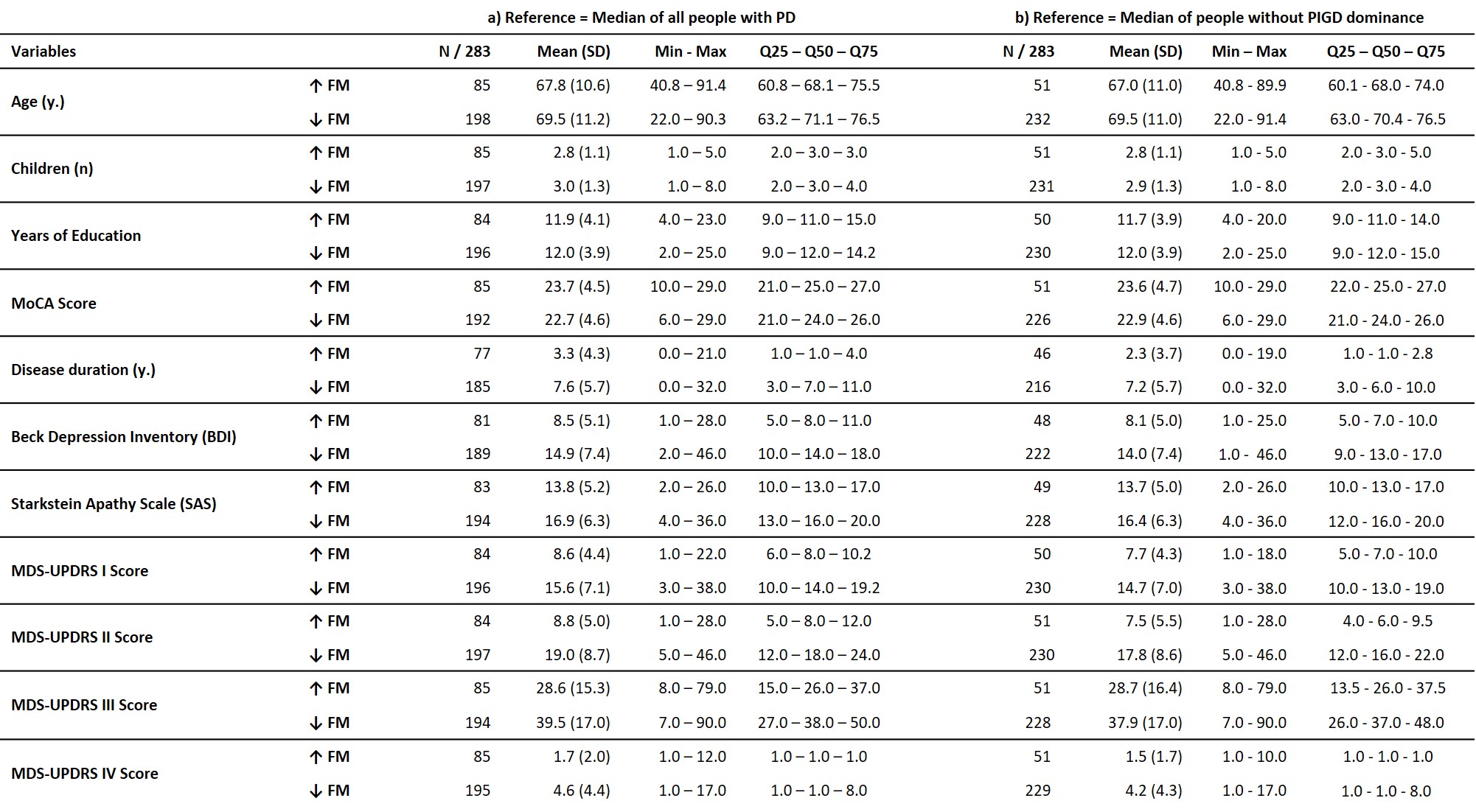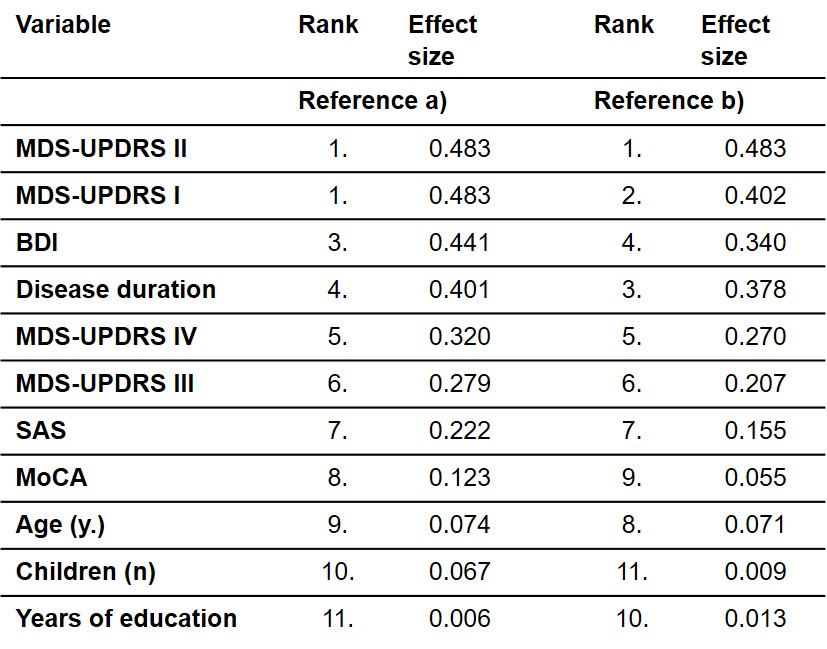Objective: To describe the frequency of people with typical Parkinson’s disease (PD) with unexpectedly high functional mobility (a high functional mobility despite the presence of a Postural Instability and Gait Disturbance (PIGD) dominant phenotype of PD) and to provide further information about their profiles.
Background: Previous research mainly focussed on the question: “Why does functional mobility in people with PD decrease?”. Instead, a salutogenic [1] research question focussing on “Why does functional mobility in some people with typical PD not decrease despite the presence of PIGD?” could help to gain a better understanding of the individual disease trajectory. However, until today, the phenomenon of high functional mobility despite the presence of PIGD has not yet received much attention.
Method: 283 people with PIGD and either typical PD or Parkinson’s disease Dementia (PDD) were identified from the Luxembourg Parkinson’s Study, a nationwide, monocentric, observational, longitudinal-prospective study [2] and were included in the current analysis. Functional mobility was assessed by the recently validated patient-reported functional mobility composite score (FMCS) [3]. Profiles for the following two groups were defined:
unexpectedly high functional mobility (↑ FM ), i.e. PIGD dominant phenotype and patient-reported functional mobility (FMCS) above the median of a) all 736 participants from Luxembourg Parkinson’s Study (with typical PD or PDD affected or not affected by the PIGD phenotype) or b) all 399 participants without a PIGD dominance
expectedly impaired functional mobility (↓ FM), i.e. PIGD dominant phenotype and FMCS ≤ median of the same groups
We calculated the effect size Cohen’s r and ordered them from highest to lowest effect size to enhance comparability among the different variables.
Results: We identified 30% (85/283) respectively 18% (51/283) of the participants with unexpectedly high functional mobility. Table 1 describes the profile of both groups.
[Table 1]
Table 2 illustrates the variables ordered from the highest to the lowest effect size.
[Table 2]
Conclusion: For the first time, we assessed the rate of PwP who show unexpectedly high functional mobility despite presence of PIGD and describe their sociodemographic and clinical characteristics. Further research is needed to understand protective factors of functional mobility.
References: [1] Antonovsky, A. (1979). Health, Stress, and Coping (Vol. 1). San Francisco, California: Jossey-Bass, Inc., Publishers.
[2] Hipp, G., Vaillant, M., Diederich, N. J., Roomp, K., Satagopam, V. P., Banda, P., . . . Kruger, R. (2018). The Luxembourg Parkinson’s Study: A Comprehensive Approach for Stratification and Early Diagnosis. Front Aging Neurosci, 10, 326. doi:10.3389/fnagi.2018.00326
[3] Hanff, A., Rauschenberger, A., McCrum, C., Aguayo, G., Zeegers, M., Leist, A. K., Krüger, R., on behalf of the NCER-PD consortium (2022). Validation of a patient-reported functional mobility composite score (FMCS) in people with typical Parkinson’s disease. International Congress of Parkinson’s Disease and Movement Disorders
To cite this abstract in AMA style:
A-M. Hanff, C. Mccrum, G. Aguayo, A. Rauschenberger, A. Leist, R. Krüger, M. Zeegers. The phenomenon of unexpectedly high functional mobility in people with typical Parkinson’s disease. A cross-sectional data analysis. [abstract]. Mov Disord. 2022; 37 (suppl 2). https://www.mdsabstracts.org/abstract/the-phenomenon-of-unexpectedly-high-functional-mobility-in-people-with-typical-parkinsons-disease-a-cross-sectional-data-analysis/. Accessed April 2, 2025.« Back to 2022 International Congress
MDS Abstracts - https://www.mdsabstracts.org/abstract/the-phenomenon-of-unexpectedly-high-functional-mobility-in-people-with-typical-parkinsons-disease-a-cross-sectional-data-analysis/


